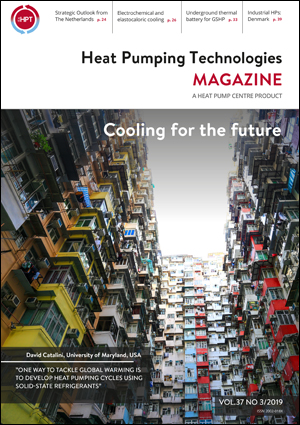|
|
 |
 |
Heat pumps – the mere term implies that the technology is used for heating. And heating has been in focus for the Heat Pumping Technologies TCP over the years. But this is slowly changing. As ever more people can afford installations for cooling, there is a rising need for novel cooling technologies world-wide, preferably without refrigerants with high climate impact. Therefore, the topic for this issue of HPT Magazine is "Cooling for the Future". We hope that this will be of interest to even more than the present HPT member countries!
Below is a list of articles included in the Magazine. The articles in bold can also be found further down, in versions shortened by the HPC.
- Foreword: Cooling and refrigeration: what lies in the future? By Van D. Baxter
- Column: Why we should take a closer look at Eastern Europe, by Thomas Fleckl
- Heat Pumping Technologies News
- News in focus: Positive energy districts in Europe – a definition is on its way
- Annexes in HPT TCP: 43, 47, 48, 49, 52, 53, 54, 55
- Strategic Outlook for the Netherlands: Climate Agreement, by Marion Bakker
- Electrochemical Membrane Technologies for use in Energy Systems, by Joe Baker
- Elastocaloric Cooling, by David Catalini
- Development of an Underground Thermal Battery for Enabling Ground Source Heat Pump Applications and Shaping Electric Demand of Buildings, by Xiaobing Liu
- Industrial Heat Pumps in the Danish Energy System – Current Situation, Potentials and Outlook, by Benjamin Zühlsdorf
Read the full HPT Magazine here.
Don't forget to visit our website for news, the latest updates and more information. |
|
|
Make your nomination of candidate latest November 30
Every three years the Peter Ritter von Rittinger International Heat Pump Award is awarded in conjunction with the International IEA Heat Pump Conference. The Peter Ritter von Rittinger International Heat Pump Award is the highest international award in the air conditioning, heat pump and refrigeration field.
Read more about the criteria, previous awardees and nominate your candidate at https://heatpumpingtechnologies.org/about/rittinger-award/
|
|
|
|
|
|
|
|